What's New
Displaying results 1501 - 1510 of 4907
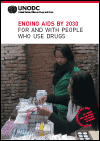
Resource | Fact Sheets,
The fact sheets provide information on facts and numbers of people who use drugs at a glance, challenges and vulnerabilities as well as HIV prevention, treatment in infographics.
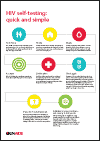
Resource | Infographics,
The decision to take an HIV self-test is yours and yours alone. No one else should force you to take an HIV test, either an HIV self-test or any other type of HIV test.
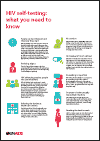
Resource | Infographics,
People can test wherever and whenever they want. HIV self-testing empowers people to find out their HIV status wherever and whenever they want. Since it is easy, quick and private, people may be encouraged to take a test earlier than they would if they had to visit a health facility, potentially bringing an earlier diagnosis. Any HIV-positive result must, however, be followed up with a second test by a health-care provider to confirm the result and get linked to appropriate prevention, treatment and care.
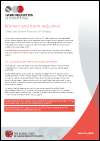
Resource | Fact Sheets,
Women are estimated to account for one third of the 275 million people who use drugs globally. Women who use drugs are consistently reported to have less access to harm reduction services and to be at higher risk of HIV and hepatitis C infection than men who use drugs. Despite these reports, robust data on this subject is scarce, and research on drug use and related health issues rarely produces information about women.
The Global State of Harm Reduction 2018 identifies a number of key issues and themes reflected across the world that limit women’s access to harm reduction services, and highlights cases of good practice.
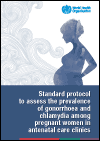
Resource | Publications,
This document has been designed to provide a framework to support local and national STI prevalence studies. The aim of these studies is to understand the burden of disease of Neisseria gonorrhoeae (NG) and Chlamydia trachomatis (CT), two priority STIs that can cause adverse birth outcomes. For this, the objective is to epidemiologically describe the prevalence of these two infections among pregnant women and, by proxy, the general population in the country.
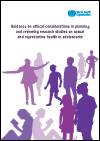
Resource | Guidelines,
This document is intended to address commonly occurring situations and challenges that one faces in carrying out research with adolescents (people aged 10–19 years), the majority of whom are deemed not to have reached the recognized age of majority in their respective settings. To this end, adolescents aged 18 and 19 years are classified as adults in many settings and have the legal capacity to make autonomous decisions regarding their participation in research. In this document, the term “children” refers to people below the age of 18 years, and the term “minor adolescents” refers specifically to people aged 10–18 years.
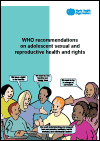
Resource | Publications,
This document provides an overview of sexual and reproductive health and rights issues that may be important for the human rights, health and well-being of adolescents (aged 10–19 years) and the relevant World Health Organization (WHO) guidelines on how to address them in an easily accessible, user-friendly format. The document serves as a gateway to the rich body of WHO guidelines, and as a handy resource to inform advocacy, policy and programme/project design and research. It aims to support the implementation of the Global Strategy for Women’s, Children’s and Adolescents’ Health 2016–2030 (1), and is aligned with the WHO Global Accelerated Action for the Health of Adolescents (AA-HA!) as well as the WHO Operational Framework on Sexual Health and Its Linkages to Reproductive Health (2,3).
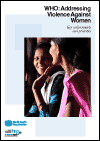
Resource | Publications,
1 in 3 women will experience physical and/or sexual violence in their lifetime, mostly by an intimate partner. This violence has a profound impact on the health of women and their families. WHO brings attention to this important public health issue through research and evidence building, development of guidelines and tools for the health sector, strengthening country capacity, and advocacy to increase political will. Here are some of WHO’s key achievements and priorities in the coming years to address violence against women.
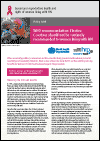
Resource | Fact Sheets,
When medically justified, a caesarean section can effectively prevent maternal and perinatal mortality and morbidity. However, there is no evidence to show that C-section delivery has any benefits for women or infants who do not require the procedure.
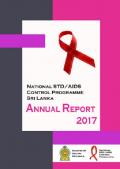
Resource | Publications,
The National STD/AIDS Control Programme (NSACP) of the Ministry of Health, is the main government organization responsible for planning and implementation of the national response to HIV/AIDS in Sri Lanka in collaboration with all stakeholders.
This volume of NSACP annual report summarizes the activities conducted by the NSACP during 2017 and presents the strategic information on STI and HIV collected from all the peripheral STD clinics and ART centers situated island-wide. It is noted with satisfaction that over the years the annual report of NSACP has become a reliable reference document on HIV and STI situation in the country to both the public and the research community.





